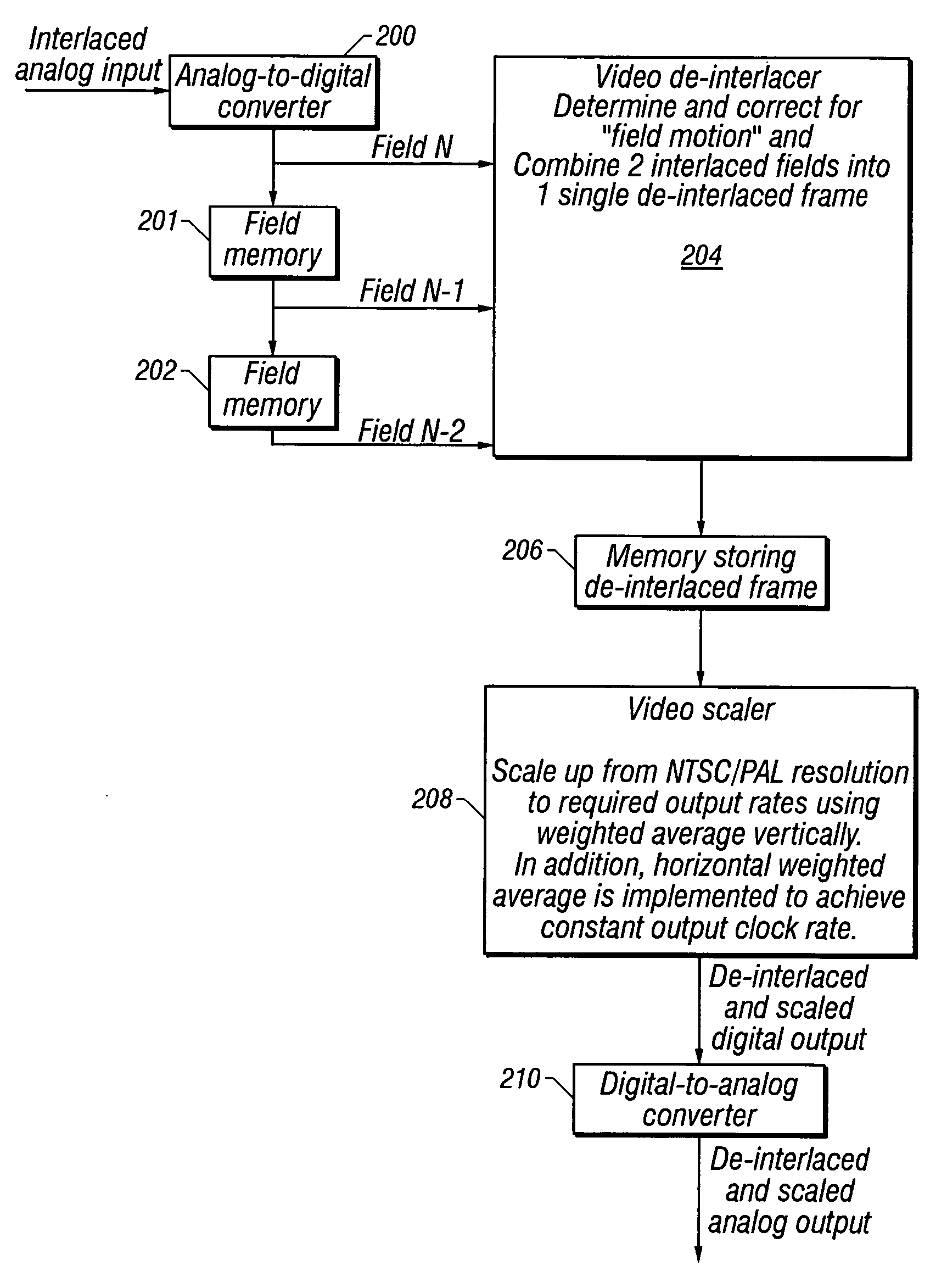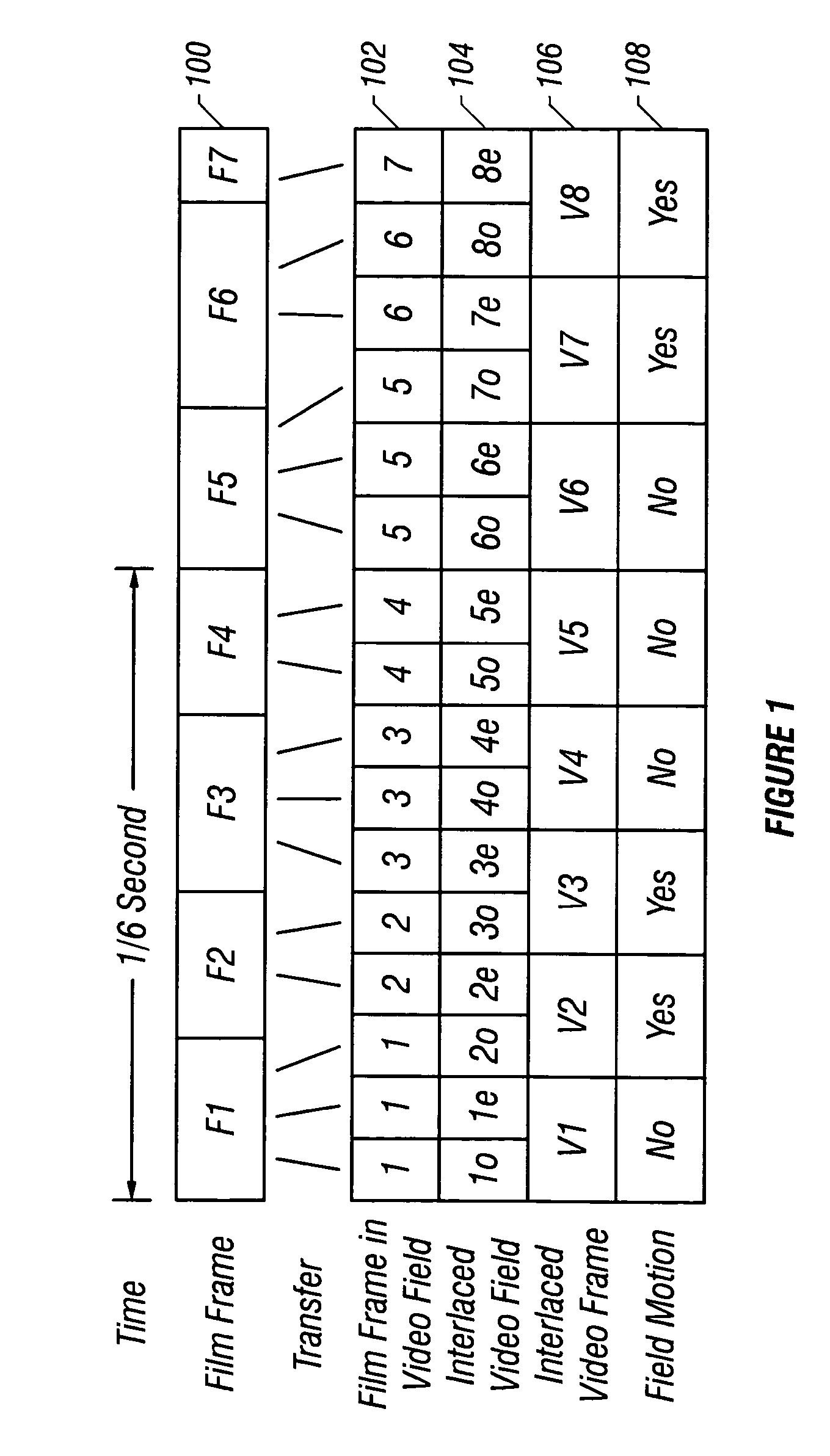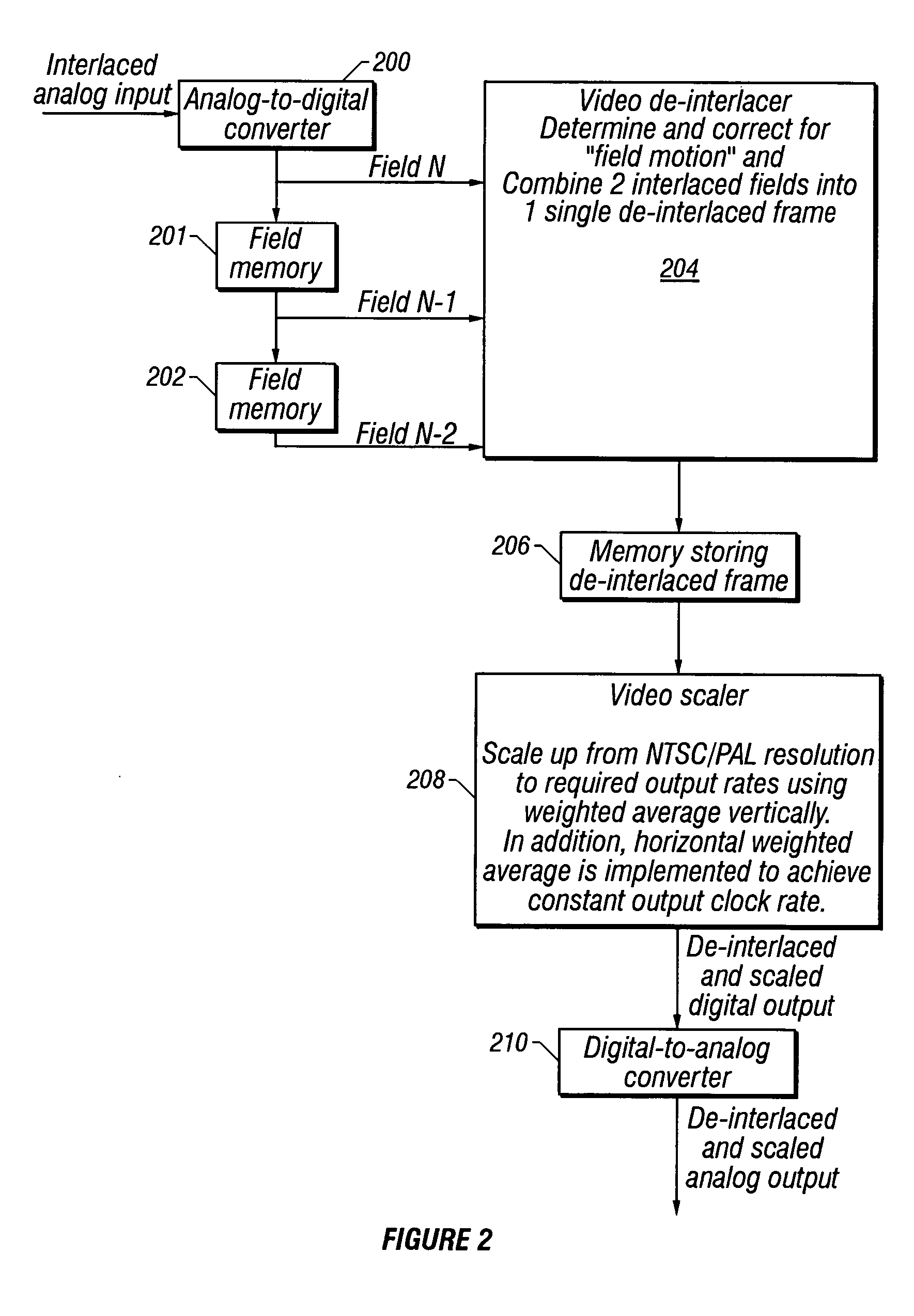Method and apparatus for eliminating motion artifacts from video
a technology of motion artifacts and video, applied in the field of video compensation, can solve the problems of analog system, viewer's inability to discern blanked lines, faster display rate, etc., and achieve the effect of enhancing or improving the quality of video images
- Summary
- Abstract
- Description
- Claims
- Application Information
AI Technical Summary
Benefits of technology
Problems solved by technology
Method used
Image
Examples
Embodiment Construction
[0038] An embodiment of the invention comprises a method and apparatus for detecting and correcting motion artifacts in interlaced video signal converted for progressive video display. In the following description, numerous specific details are set forth to provide a more thorough description of embodiments of the invention. It will be apparent, however, to one skilled in the art, that the invention may be practiced without these specific details. In other instances, well known features have not been described in detail so as not to obscure the invention.
[0039] An embodiment of the invention provides a method and apparatus for enhancing or improving the quality of video images by correcting the effects caused by converting the video signal from one type to another. For instance, one embodiment of the invention eliminates field motion from interlaced video material during conversion to progressive video. An embodiment of the present invention entails determining whether the interlac...
PUM
 Login to View More
Login to View More Abstract
Description
Claims
Application Information
 Login to View More
Login to View More - R&D
- Intellectual Property
- Life Sciences
- Materials
- Tech Scout
- Unparalleled Data Quality
- Higher Quality Content
- 60% Fewer Hallucinations
Browse by: Latest US Patents, China's latest patents, Technical Efficacy Thesaurus, Application Domain, Technology Topic, Popular Technical Reports.
© 2025 PatSnap. All rights reserved.Legal|Privacy policy|Modern Slavery Act Transparency Statement|Sitemap|About US| Contact US: help@patsnap.com



